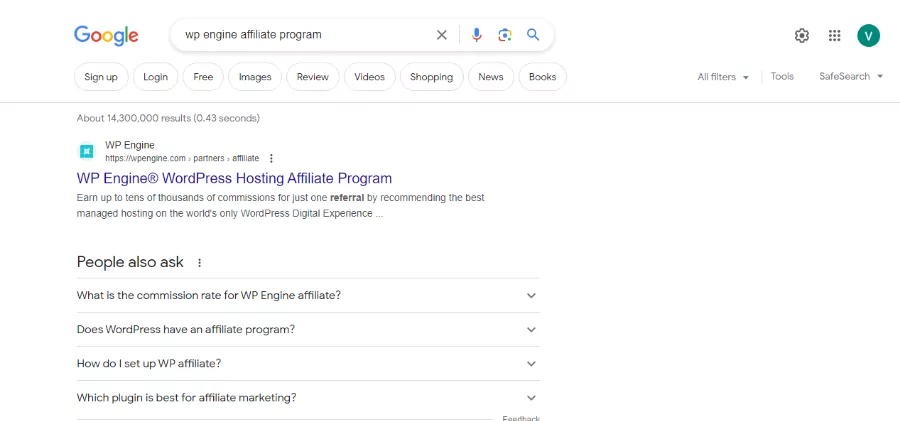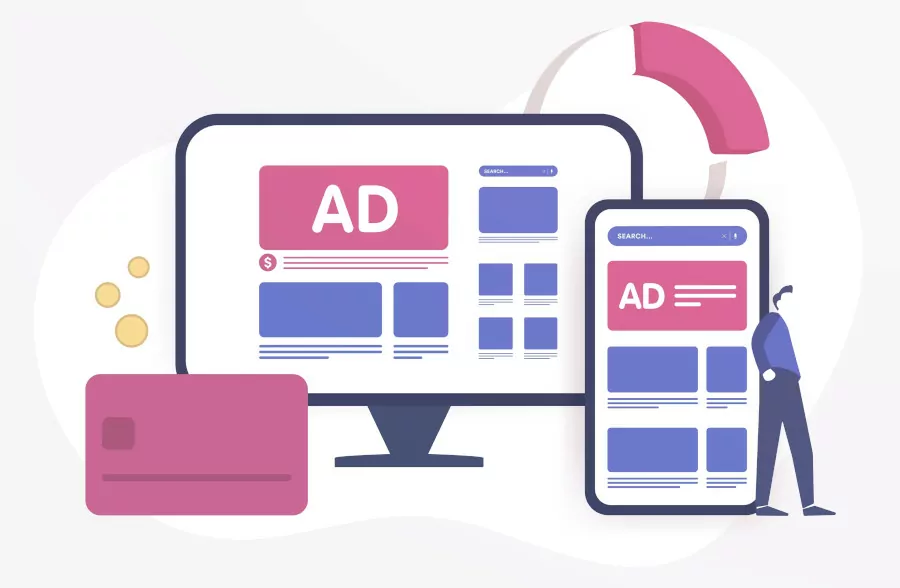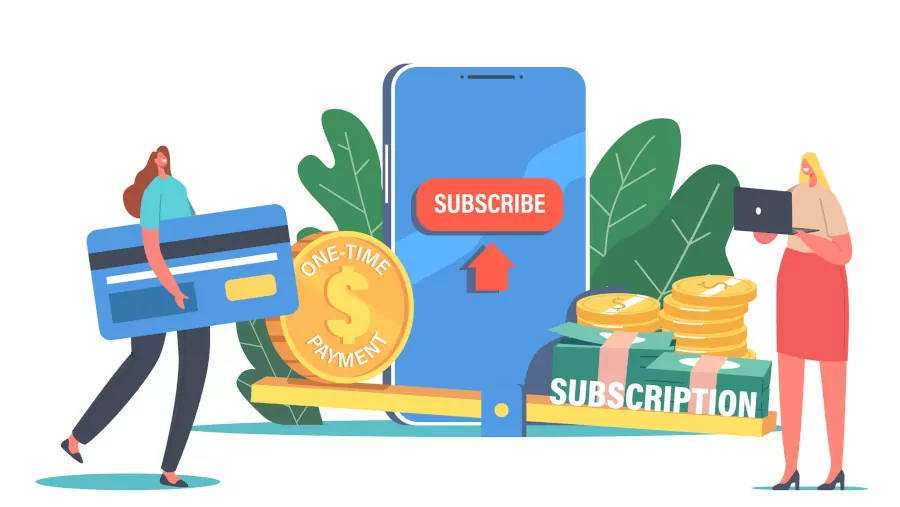
Table of Contents
- 1 What is WordPress Monetization?
- 2 Caveats Concerning WordPress Monetization
- 3 Best WordPress Monetization Tactics
- 4 WordPress Monetization Plugins
- 5 Final Words
You will agree that finding the best WordPress monetization plugins (and tactics) to grow your revenue is challenging.
If that describes your situation, you’re in the right place, and we have your back as always.
Like you, I had big dreams when I started my first WordPress site. Also, like you, I was skeptical about making money online.
Don’t know what I mean?
I’m sure – by now – you’ve read countless success stories on the web.
Tales of mere “nobodies” who became blogging superstars and are now living the American dream.
People who escaped dreadful 9 to 5 jobs to create multimillion-dollar businesses using WordPress.
One such success story changed my life and inspired me to start my WordPress journey, but that’s a story for another day.
These success stories are everywhere you look, but where is the lie?
I mean. Why can’t you seem to make money from your WordPress site like others?
In other words, are these success stories sheer lies to fool you into buying a product? Or can you make a comfortable living with your WordPress site?
Creating content for your website is tedious and time-consuming. It makes sense to want to make money to offset website fees and pay for your efforts.
But that hasn’t been going exactly according to plan. Now, has it?
In this article, we shine a light on several WordPress monetization tactics. We also share multiple WordPress monetization plugins to help you manage your strategies easily.
Without further ado, let us get to it.
What is WordPress Monetization?

What exactly does it mean to monetize a WordPress website? Monetizing a WordPress site is merely converting your traffic into money.
It encompasses every technique business owners use to earn money from their WordPress websites.
We can divide WordPress monetization into two main categories, namely:
- Direct monetization – This approach lets you make money directly from your users. Strategies include selling products, charging for memberships, donations, etc.
- 3rd-party (Indirect monetization) – This involves a 3rd-party paying for access to your audience. Tactics include display ads, affiliate marketing, sponsored posts, etc.
Combine strategies from both categories for best performance.
Now, you can spend months creating content and never make a cent. I know; I have been in your shoes.
And it’s so disheartening that many beginners give up. They call it quits way too early, long before enjoying the fruits of their hard work.
But that’s because many novices don’t take the job seriously or have unrealistic expectations.
Also, they start without any strategy whatsoever. They have no content strategy, no marketing strategy, and – worse – no monetization strategy.
They figure if they add content to a website, the money will fall from the sky. Nothing could be further from the truth.
You aren’t alone, either…
I started my first WordPress site without a plan, and it took me a little over a year to get my first freelance client.
I took twice as long to earn my first commission worth $60 from the Bluehost affiliate program. In my defense, I didn’t know affiliate marketing existed!
Don’t be like me – you can do better. Like, way better since – if you aren’t aware – WordPress sites make good money.
But to make the big bucks, you must treat your WordPress site as the business it is.
That means preparing a solid business plan that covers everything from content to marketing and monetization.
A plan that covers everything you want to achieve (in this case, making money) and how you will achieve it.
Don’t set yourself up for failure by failing to plan.
Caveats Concerning WordPress Monetization
Monetizing your WordPress site needn’t be challenging, especially if you know what you’re doing, what to expect, and have the right WordPress monetization plugins.
Here are a few things to remember as you monetize your website.
Traffic
You need lots of traffic to make money with your WordPress site. If you don’t have traffic, you are doomed.
You have no one to view/click your ads or affiliate links, no one to buy your products, no one to join your membership – nothing!
Utilize all available techniques, including SEO, to increase traffic to your website.
High-Quality Content
All WordPress sites that make good money publish high-quality content consistently.
Publishing an article sometimes to keep your blog “active” won’t cut it, mi amigo. You won’t get the traffic.
Also, don’t expect to convert anyone into a paying customer with low-quality content.
Marketing
Aren’t we all guilty of this? Many beginners write and write some more. They create tons of great content for their websites.
The only problem? Nobody ever finds their content because they didn’t market the website.
While you can try different marketing methods, make email lists a top priority.
A Loyal Following
WordPress sites that make millions have loyal followers who become brand ambassadors.
Brand ambassadors buy your products or services since they trust you.
They are also more likely to click your affiliate links and share your website with others.
Know your audience
This should have come first. Define your target audience to maximize your earning potential.
How else will you provide value with your content if you don’t know your audience?
Successful WordPress site owners have a thorough understanding of their audience.
Be Patient & Realistic
Driving traffic to your website takes time, so don’t expect to start making money overnight. If you’re looking for a “get-rich-quick” scheme, I’m afraid this isn’t your post.
I urge you to focus on creating value and growing your traffic before monetizing your website. Create content so good that people will have no choice but to follow your brand.
And for Pete’s sake, don’t expect to make millions from Google AdSense with ten posts and 1,000 page views a month.
If you’d like to make money with WordPress but don’t have a lot of traffic, you can try other WordPress monetization techniques, as you’re about to learn.
Pro Tip: Always measure your results to know what’s working and what needs to bite the dust.
With that out of the way, let us move ahead and discover the best WordPress monetization tactics to grow your revenue.
We will also share relevant WordPress monetization plugins for each technique to make your work easier.
Best WordPress Monetization Tactics
Can you monetize your WordPress website? Yes, you can, and you don’t need any technical knowledge.
I have made money by selling services, affiliate marketing, and Google AdSense, so I know it works. You’re hearing it from the horse’s mouth 🙂
Whether you’re starting or already have a growing blog, choose strategies that work for your target audience and business model.
I say this because not every strategy is viable for your business. Some tactics will be out of reach as you start.
For this reason, we have organized the following section in no particular order. Pick any one strategy, test, rinse, and repeat.
#1 – Sell Freelance Services

This is one of the easiest and fastest ways to monetize your WordPress website. It’s a brilliant WordPress monetization tactic for absolute beginners.
If you have a blog, it means you already have something to offer the world. And there’s never a shortage of people looking for the expertise, knowledge, and skills you possess.
Do you write the content on your blog? If so, you can offer freelance writing services right away. Add a “hire me” page to your WordPress site to attract clients.
Are you good with Adobe Photoshop, Canva, or any other design tool? Many people are looking for graphic designers right this moment.
You can use your WordPress website as your portfolio. Post samples of your designs to your website, and let clients know you’re open to work.
Can you build a WordPress website from scratch? If so, you can monetize your WordPress site by offering web design/development services.
I occasionally get people who want to fix something on their website. Or configure a theme or plugin I have reviewed. That’s quick money right there.
Perhaps you can’t build a website without a kitten dying somewhere. But you easily rank your articles on the first page of Google.
If that’s the case, you can make a killing offering SEO services. That’s right; an SEO expert makes between $26 and $126 per hour, or $53,500 to $262,000 per year, according to ZipRecruiter.
That’s not all.
You can even offer SEO as part of your writing services. The same goes for social media marketing and other forms of marketing.
Are you a polyglot? You can help website owners translate websites using a plugin or fine-tune their translations.
Do you find public speaking easy? Be on the lookout for events where you can participate. Add a page on your WordPress site letting event organizers know you’re available for speaking gigs.
If you love organizing events, you can turn your WordPress page into an event booking machine. Or include a page where people can register and pay.
Last but not least, does your niche have unexploited consulting opportunities? Add a page on your site that lets people know you offer consulting services. Similarly, you can offer services as a life coach.
Many WordPress website owners have taken this route, as shown by the many personal finance and weight loss websites on the Internet.
You will need WordPress form plugins such as Gravity Forms or Ninja Forms to book clients.
In a nutshell, you can offer different types of online and offline services on your WordPress website. The best part is you already have the skills and don’t need much traffic.
You only need to put yourself out there to make money selling services.
#2 – Monetize WordPress with Affiliate Marketing

Did you know the global affiliate marketing industry is worth $17 billion? That’s right. The US affiliate marketing market alone is worth $6 billion.
That means there is plenty of pie to go around. But are you getting in on the action or watching from the sidelines?
Affiliate marketing is one of the most popular WordPress monetization strategies. It’s also quite lucrative.
Do you remember the $60 commission I mentioned earlier? I made that money from affiliate marketing, and it was simple.
I wrote an article about my not-so-happy experience with a separate web hosting company. In the article, I slightly hinted I was switching to Bluehost.
I have long left Bluehost because I was hacked. Twice!
Back to the point.
I linked to Bluehost using my affiliate link, and a few days later, I had $60 in my affiliate account. As simple as A, B, C. One of my readers had clicked the affiliate link and purchased a hosting package.
Affiliate marketing is a simple concept to grasp. You promote someone else’s product via an affiliate link, and if one of your website visitors buys the product via the link, you earn a set commission.
Surprisingly, you don’t need lots of traffic to monetize your WordPress website with affiliate marketing.
It’s true. I had about 1,000 page views when I made my first affiliate sale. You only need highly relevant traffic. Still, more traffic means a higher earning potential.
Implementing affiliate marketing as a WordPress monetization strategy is incredibly easy; you should be up and running in minutes.
2 Ways to Monetize WordPress with Affiliate Marketing
There are two main ways to make money with WordPress via affiliate marketing.
First, you can make money with affiliate marketing as a publisher. In this scenario, you join an affiliate network or program and add links to your content.
If you’d like to join an affiliate network, Amazon Associates is a popular choice for many website owners. Other reputable networks include ShareASale, Commission Junction, Impact, and ClickBank.
Many companies offer affiliate programs. For example, we have our very own affiliate program that lets you earn up to 30% per sale.
Finding more affiliate programs is easy. Search “[company name] affiliate program” in Google. For example, “WP Engine affiliate program.”

Signing up with most affiliate networks is free. But beware; some networks (such as ShareASale) charge renewal fees.
Also, managing all the affiliate links on your site can be challenging. Here’s where WordPress affiliate marketing plugins come in.
You can use plugins such as Pretty Links or ThirstyAffiliates to manage your affiliate links. Most affiliate networks and programs also offer dashboards where you can manage everything easily.
Don’t forget to add a disclosure on your website to let readers know you’re using affiliate links.
Second, you can use an affiliate program to promote your products and services. If you sell products or services on your site, you can reward readers if they refer customers to your business.
You can offer commissions, special discounts, and other goodies to incentivize website visitors. Your business gets more sales, and readers are happy. It’s a win-win.
You can use WordPress affiliate plugins such as AffiliateWP and WP Affiliate Manager to manage an affiliate program on your WordPress site.
#3 – Display Ads WordPress Monetization

Displaying ads is one of the oldest ways to monetize a WordPress website. It’s usually the first WordPress monetization tactic that most website owners implement.
The only limitation?
You need to generate massive amounts of traffic to make ad placement worthwhile. Yep, you won’t make much from display ads if you don’t have lots of traffic.
Why?
Ads usually have a low conversion rate. As such, the pay is low. Although some ads can net $10 per click, it’s rare.
There are generally two payment models: PPC and PPM. PPC is short for pay-per-click. The advertiser pays every time a user clicks on the ad.
If the PPC is $0.5 and 1,000 people click on the advert, you earn $500. If the PPC is $10, that would translate to $10,000!
PPM is short for pay-per-mille. Here, the advertiser pays you for every 1,000 views the ad receives.
If the PPM is $10 and you have 50,000 views, you make $500. If you have 1,000,000 views, that becomes $10,000.
From the above example, PPC has a higher earning potential than PPM. Still, both are great WordPress monetization strategies to implement.
Popular ad networks include Google AdSense, BuySellAds, Info Links, Mediavine, PropellerAds, Adsterra, and Taboola. A simple “advertising networks” search in Google will bring up more.
Setting up accounts with most ad networks is easy and free. Adding the adverts to your site can be challenging if you don’t know coding.
Use WordPress monetization plugins such as Easy Google AdSense, Ad Inserter, and AdSanity to manage your adverts.
Some downsides.
You don’t have complete control over ads. An ad network might show irrelevant ads that ruin the user experience on your site.
Also, using lots of ads on a page can annoy readers, which leads to higher bounce rates.
Additionally, some ad networks have stringent approval requirements. For instance, Mediavine has a minimum traffic requirement of about 60,000 to 80,000 monthly page views.
Another thing. Web visitors use ad blockers nowadays. On top of that, they have developed what is commonly known as “banner blindness.” Both affect your earning potential negatively.
To counter this, you can sell ad space on your site directly to businesses. You can use PPC, PPM, or charge a flat rate.
#4 – Sell Memberships & Subscriptions

If you want to create a long-lasting source of recurring income, you will love monetizing your WordPress site with memberships and subscriptions.
There are many brilliant examples of membership sites and online communities to point you in the right direction if you don’t know where to start.
The best part is it’s easy to create a money-making membership website even as a beginner.
Nowadays, people are used to the idea of working from home. Many are looking to start businesses, and they need information.
You can create courses to fill this gap. If you’re well-versed in your field, you can monetize WordPress with a membership site selling courses.
Many bloggers have already taken this route, and if their income reports are anything to go by, these folks are making a killing.
Once you create a course, you only need to keep updating the content to remain relevant and provide more value.
The sky is the limit with membership sites. Don’t limit yourself to courses. You can sell anything under the sun with the membership model.
One of my favorite examples is Dollar Shave Club, which sells razor blades using memberships.
You can even sell consulting services as part of your membership plans.
For example, a financial expert or lawyer can fill their calendars using memberships.
Clients pay a recurring fee (e.g., a monthly retainer) for prioritized access to your services – periodically or on demand.
Besides, you can upsell and cross-sell other products and services with your membership site (follow the links above to see examples of this in action).
Subscriptions as a WordPress Monetization Tactic
If creating a fully-fledged membership site is a tall order, you can sell access to exclusive content instead.
Many big brands, such as The New York Times and The Washington Post, use this monetization strategy successfully.
But they are huge publications with lots of content and traffic. What if I don’t have lots of content and traffic?
Don’t worry; you can still make selling exclusive content work for you. Many small businesses are doing it, and so can you.
This is how the strategy works.
Start by creating free content with relevant CTAs to your premium content. After that, you have two options to encourage readers to subscribe.
- Metering – You allow users to access a set quota of articles (say, 10 per month) and nudge them to subscribe to read more content.
- Lead-in – You show the readers a portion of the article (maybe the first paragraph) and then ask users to subscribe to read the full article.
You only need to ensure your content is so good that readers don’t hesitate to pay.
Don’t keep all content behind a paywall. Offer some of your best content for free to grow your SEO traffic and motivate users to subscribe.
It’s easy with the right tool.
Selling memberships and subscriptions is the stuff of fourth-graders, especially with a powerful WordPress membership plugin such as Paid Member Subscriptions.
Paid Member Subscriptions offers you all the features you need to create a robust membership site.Paid Member Subscriptions Pro
The plugin is compatible with your favorite tools and incredibly easy to use.
#5 – Sell Digital or Physical Products

Can’t decide on a WordPress monetization technique yet? If so, why not try your hand at retailing?
WordPress makes it incredibly easy to build an online store. Sell either digital or physical products on your online store to make money.
Digital products include plugins, themes, apps, eBooks, cheatsheets, audio files, images, websites, charts, stickers, extensions, and more. You can create a membership site with free PLR content.
The best thing about online stores is you don’t have to hold inventory. If you’re selling physical products, leverage dropshipping to fulfill orders without touching the product.
Alternatively, you can use your online store to generate buzz and leads for your offline business. Or you can do both.
It’s relatively easy to set up online stores using WordPress plugins. WooCommerce is the defacto eCommerce platform for millions of users looking for flexibility.
There are many other eCommerce solutions for different needs. Here’s a quick example.
If you’d like to sell T-shirts, you don’t have to buy the T-shirts upfront. Just create the designs and use Printify. You sell t-shirts to your audience, Printify fulfills the orders, and you split the spoils.
You can do the same with mugs, electronics, car parts, badges, cookies, homemade mead, Halloween decorations, furniture…the list is endless. Such is the power of dropshipping.
All on your WordPress website 🙂
What’s more?
You can automate most tasks with WordPress monetization plugins such as AliDropship or Spocket.
Whether you drop-ship or make products, selling on your WordPress site is a great way to earn semi-passive income.
#Bonus WordPress Monetization Tips
We would need an entire day to cover all WordPress monetization strategies. To keep things short, here are a few more tips to monetize your WordPress site.
- Sponsored content – This works just like affiliate marketing. The advertiser pays you to create and publish content on your site;
- Add content aggregator – In its basic form, a content aggregator is a collection of RSS feeds. Create something like Flipboard;
- Repurpose content into other formats – Convert performing blog posts into YouTube videos, TikTok, etc;
- Donations – This is a great WordPress monetization strategy for non-profit organizations;
- And if nothing works, create and flip websites.
WordPress Monetization Plugins
Here’s a quick summary of the plugins you need to monetize your WordPress site.
- Sell services – You need form plugins such as Gravity Forms or Ninja Forms;
- Affiliate marketing – To manage your affiliate links, use Pretty Links or ThirstyAffiliates. To create an affiliate program, check out AffiliateWP or WP Affiliate Manager;
- Display ads – Manage your ads using Easy Google AdSense, Ad Inserter, and AdSanity;
- Sell memberships and subscriptions with Paid Member Subscriptions;
- Sell products using WooCommerce, AliDropship, and Spocket.
Final Words
Monetizing your WordPress website shouldn’t be challenging. Anybody can do it. You can do it.
If you don’t know where to start, use these WordPress monetization plugins and tips, and let us know what you think.
How do you monetize your WordPress website? Please let us know in the comments.
Related Articles

27+ WooCommerce Must Have Plugins for 2025: Improve Your Store
What are the WooCommerce must have plugins that every store needs? If you found your way to this post, that's probably the issue you're dealing with right now. While the core WooCommerce plugin offers most of the basic functionality that you need for a store, pretty much all WooCommerce stores rely on dozens or even […]
Continue Reading
5 Best WordPress Automation Plugins Compared (Most Are Free)
Searching for the best WordPress automation plugins? Automation plugins are kind of like Zapier…but for your WordPress site. You can use them in all kinds of different ways, including some of the following: Integrating two or more plugins or services that you're using. Automating important tasks, such as automatically assigning a user a certain role […]
Continue Reading
A Look at Membership Marketing: Which Are the Best Promotion Ideas & Strategies?
Can't seem to get your head around membership marketing, huh? Don't worry, we've all been there. The whole matter might make you feel like Sisyphus initially, but it's easy as you're about to learn. We agree that creating a membership site is a thrilling feat. Like us, you're probably as excited as a bride on […]
Continue Reading

